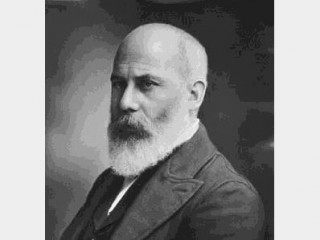
Daniel De Leon biography
Date of birth : -
Date of death : -
Birthplace : Curaçao, Netherlands Antilles
Nationality : American
Category : Famous Figures
Last modified : 2011-02-15
Credited as : Socialist newspaper editor, Marxist theoritician,
The American Socialist theoretician and political leader Daniel De Leon (1852-1914) was, according to Lenin, "the greatest of modern Socialists—the only one who has added anything to Socialist thought since Marx." However, De Leon's Socialist Labor party remained a tiny sect.
According to his own testimony, Daniel De Leon was born into a wealthy family on the island of Curacao near Venezuela, but it is possible that he was American-born. He was also said to have studied languages, history, philosophy, and mathematics at Dutch and German universities between 1865 and 1871. In 1872 he came to New York City and briefly assisted Cuban revolutionaries editing a Spanish-language newspaper. De Leon taught at a preparatory school and in 1876 entered Columbia University Law School. He graduated in a year and in 1883 was appointed to an international law lectureship at Columbia. He left Columbia in 1889, when he was denied a promised promotion.
De Leon's career at Columbia apparently declined because of his support of Henry George's third-party mayoralty candidacy in 1886 and his interest in the Nationalist movement of Edward Bellamy. At any rate, De Leon joined a tiny, almost moribund German organization in New York, the Socialist Labor party (SLP), and within a few years became the acknowledged master of the organization. In 1891 he became editor of the party's paper and was never seriously shaken in his leadership of the SLP until his death, in 1914.
The stormy, radical career of De Leon caused him to be resented as a disrupter by most of the Socialists in the United States. Personally, he was arrogant, inflexible, and intolerant of dissent; he even expelled his favorite son, Solon, from the SLP for questioning one of his theses. His unsuccessful attempts to control labor unions earned him further enmity, and his dictatorship within the SLP caused the secession of many former followers.
De Leon's attempt to align the Knights of Labor as an auxiliary to the SLP in the early 1890s only hastened the decline of that union. After an unsuccessful attempt to "bore from within" the American Federation of Labor, he organized the Socialist Trades and Labor Alliance (STLA) in 1895. It grew no faster than the parent SLP, and in 1905 he merged it into the Industrial Workers of the World (IWW). Again, his collaborators suspected his intentions, and in 1908 he and the STLA were tacitly expelled from the IWW. De Leon claimed that his followers were the true IWW, and the fiction was maintained until his death.
A prolific and brilliant writer, De Leon turned out dozens of pungent pamphlets and essays on topics facing the revolutionary movement of his day. Like his writings, his speeches were models of clarity and logic, studded with vivid metaphors and aphorisms. But his insistence on a hard-and-fast ideology did not prosper, and the leadership of American socialism passed to the more flexible Socialist Party of America even during his life-time.
Most accounts of De Leon's career in histories of the American Socialist movement are essentially hostile to him. These include Ira Kipnis, The American Socialist Movement, 1897-1912 (1952); Howard H. Quint, The Forging of American Socialism (1953); David A. Shannon, The Socialist Party of America (1955); and Melvyn Dubofsky, We Shall Be All: A History of the Industrial Workers of the World (1969). A helpful study is Daniel De Leon, the Man and His Work: A Symposium (1920), published by the Socialist Labor party. There is also an essay on De Leon in Charles A. Madison, Critics and Crusaders: A Century of American Protest (1947; 2d ed. 1959).
















